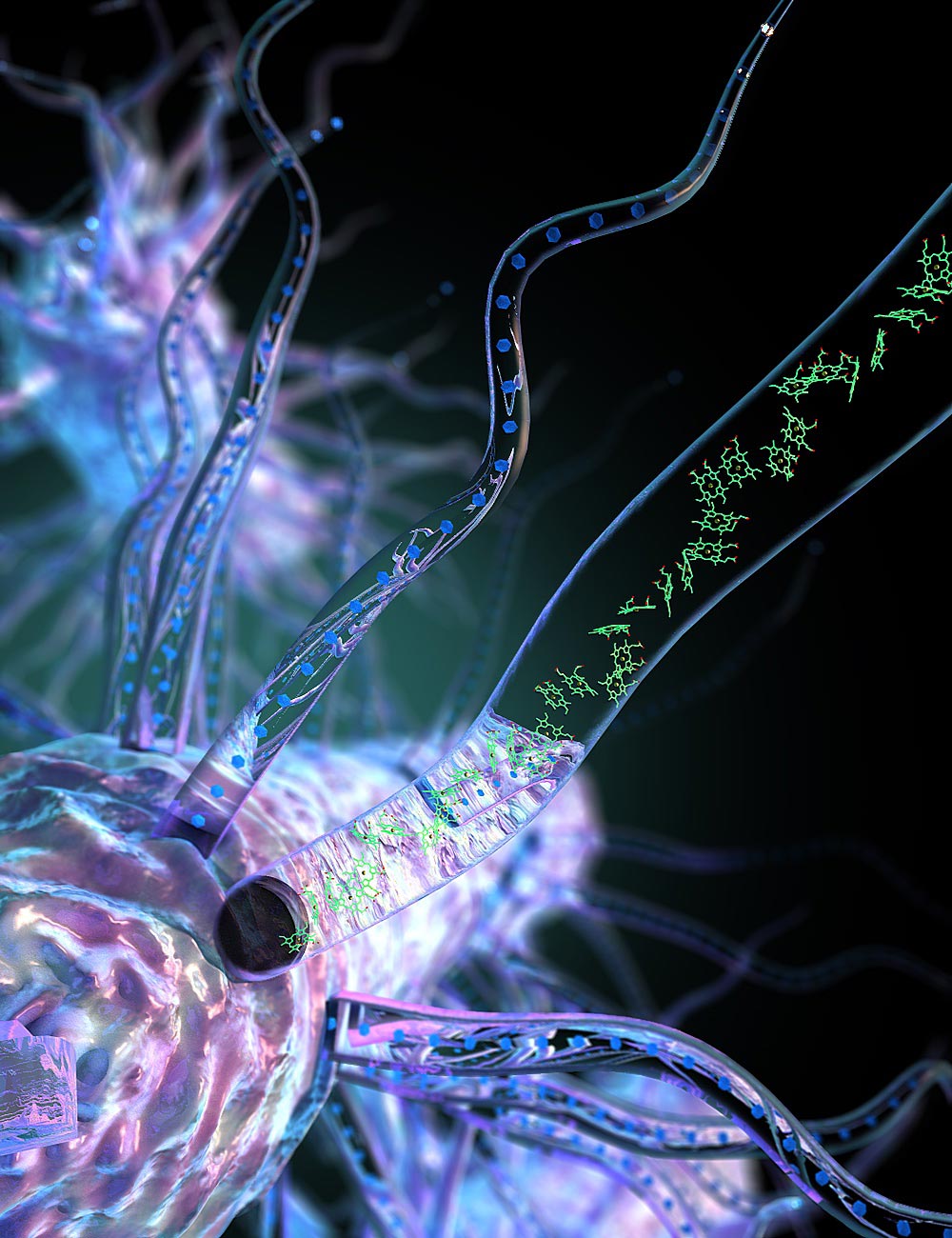
Bacteria producing nanowires made up of cytochrome OmcS. Credit: Ella Maru Studio
Cooling Speeds Up Electrons in Bacterial Nanowires
The ground beneath our feet and under the ocean floor is an electrically-charged grid created by bacteria “exhaling” excess electrons through tiny nanowires in an oxygen-depleted environment. By identifying the mechanism of electron flow,
The researchers also found that cooling the environment around the nanowires of the bacteria Geobacter from room temperature to freezing increases conductivity 300-fold. This is very surprising because cooling typically freezes electrons and slows them down in organic materials. By combining experiments with theory, the researchers found that colder temperatures restructure hydrogen bonds and flatten heme proteins within nanowires, thus enhancing the flow of electricity.
Leveraging this naturally occurring electrical grid might one day lead to the development of living and self-repairing electrical circuits, new sources of electricity, and bioremediation strategies.
Reference: “300-fold conductivity increase in microbial cytochrome nanowires due to temperature-induced restructuring of hydrogen bonding networks” 11 May 2022, Science Advances.DOI: 10.1126/sciadv.abm7193
Other authors include Sophia Yi, Yangqi Gu, Catharine Shipps, Jens Neu, Patrick O’Brien, Dennis Vu and Sibel Ebru Yalcin from the Malvankar Lab, and Atanu Acharya, Uriel Morzan, and Subhajyoti Chaudhuri from the Batista Lab.
Source: SciTechDaily